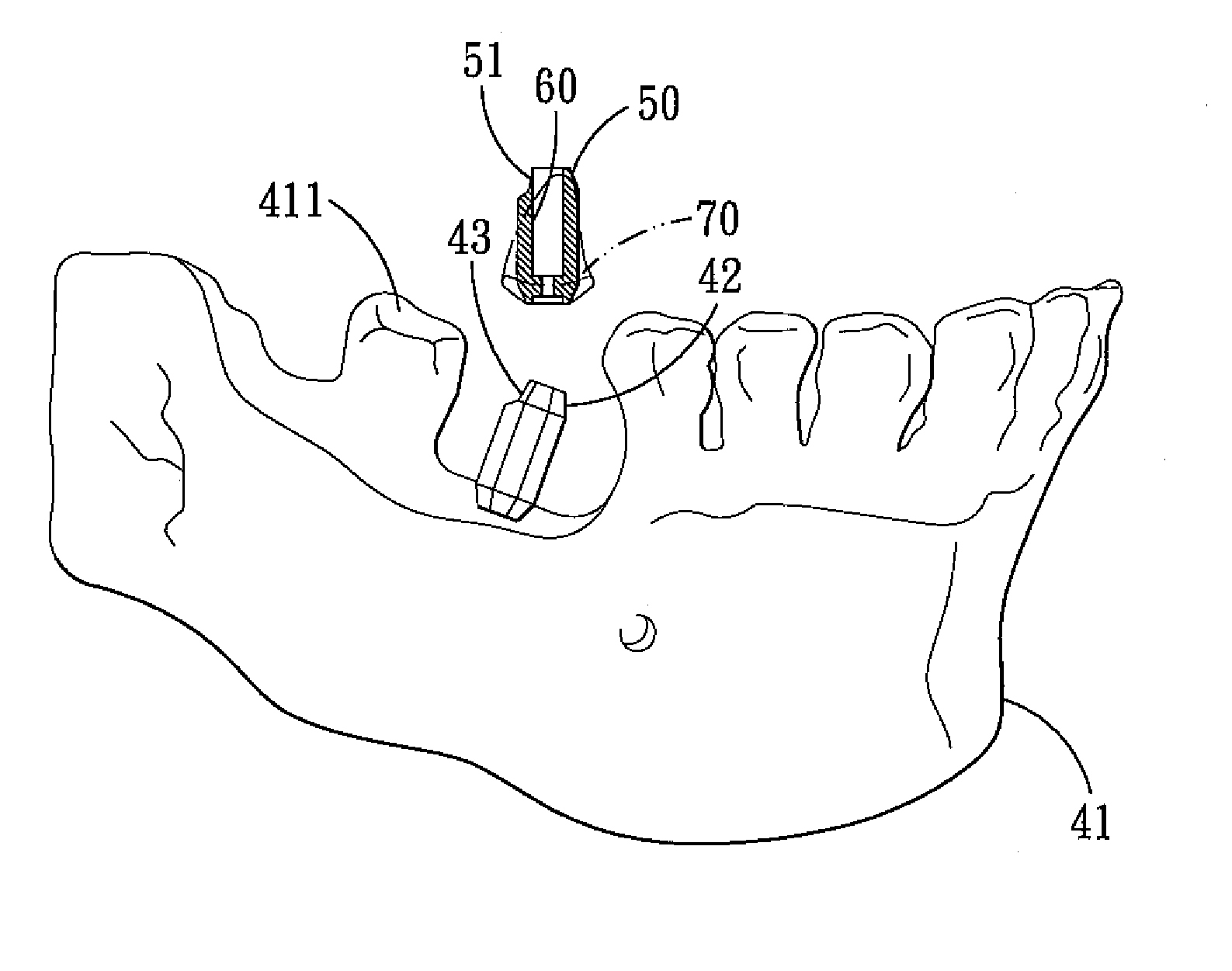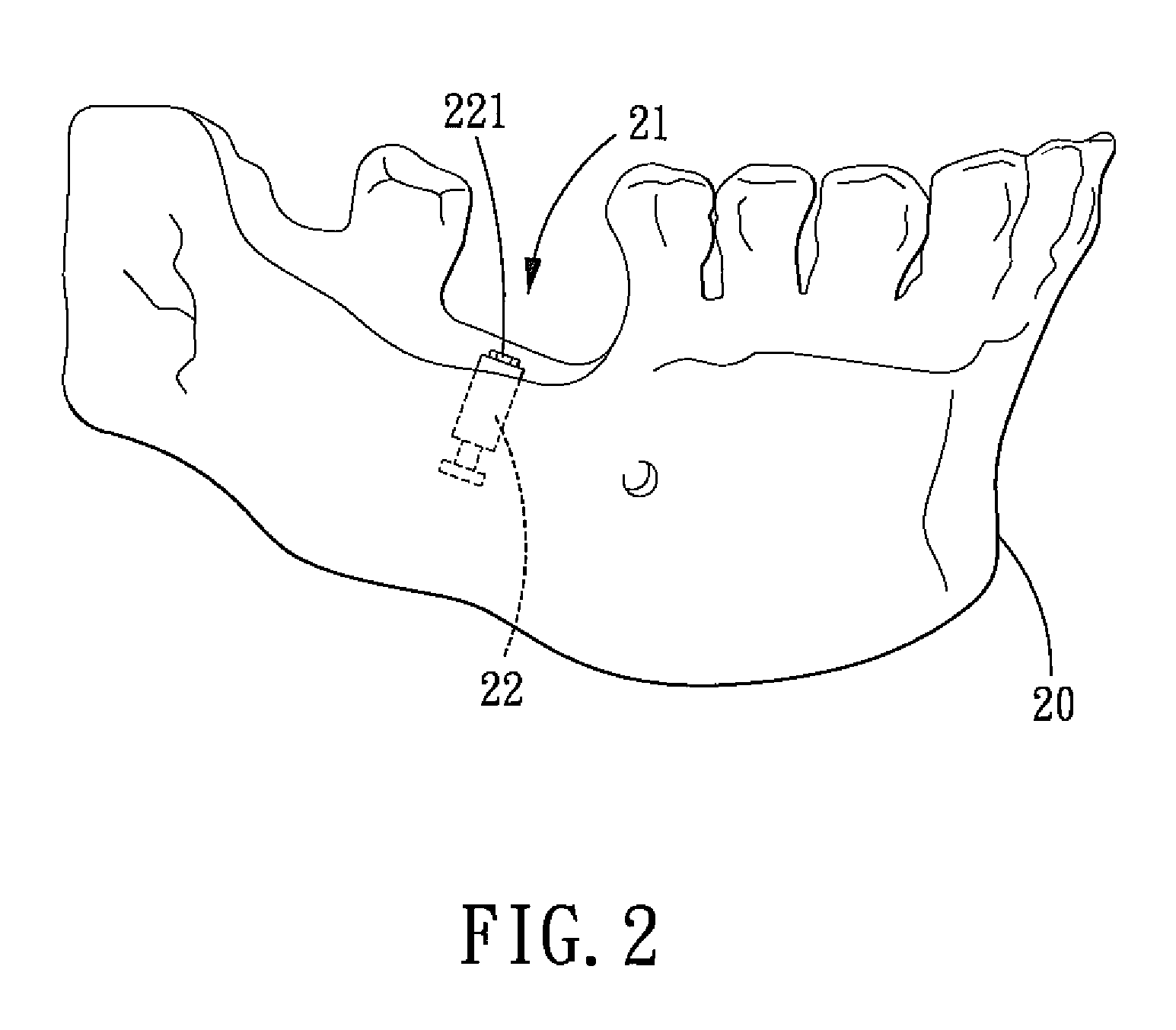Method for designing an abutment
a technology of abutments and abutments, which is applied in the field of dental implant abutments, can solve the problems of loss of occlusion data, deviation in configuration between abutments, and inability to obtain accurate digital data of analog interfaces, etc., and achieve the effect of improving the esthetics of implanted artificial teeth
- Summary
- Abstract
- Description
- Claims
- Application Information
AI Technical Summary
Benefits of technology
Problems solved by technology
Method used
Image
Examples
Embodiment Construction
[0028]The present invention will be clearer from the following description when viewed together with the accompanying drawings, which show, for the purpose of illustrations only, the preferred embodiment in accordance with the present invention.
[0029]Please refer to FIG. 1 first, which shows a method for designing an abutment in accordance with the present invention which comprises the steps of: acquiring a mouth model 11; setting a reference abutment device 12; scanning 13; positioning 14; and adjusting 15.
[0030]As shown in FIGS. 2-3B, in the step of acquiring the mouth model 11, which consists of reproducing the inside of the patient's oral cavity to create a mouth model 20, at the dental implant site of the mouth model 20 is an analog 22 having an exposed interface 221. In the present embodiment, the interface 221 of the analog 22 is, for example, in the shape of a hexagon, and the interface 221 can also be in various conventional shapes, such as a triangle, petal shape, and so o...
PUM
 Login to View More
Login to View More Abstract
Description
Claims
Application Information
 Login to View More
Login to View More - R&D
- Intellectual Property
- Life Sciences
- Materials
- Tech Scout
- Unparalleled Data Quality
- Higher Quality Content
- 60% Fewer Hallucinations
Browse by: Latest US Patents, China's latest patents, Technical Efficacy Thesaurus, Application Domain, Technology Topic, Popular Technical Reports.
© 2025 PatSnap. All rights reserved.Legal|Privacy policy|Modern Slavery Act Transparency Statement|Sitemap|About US| Contact US: help@patsnap.com



